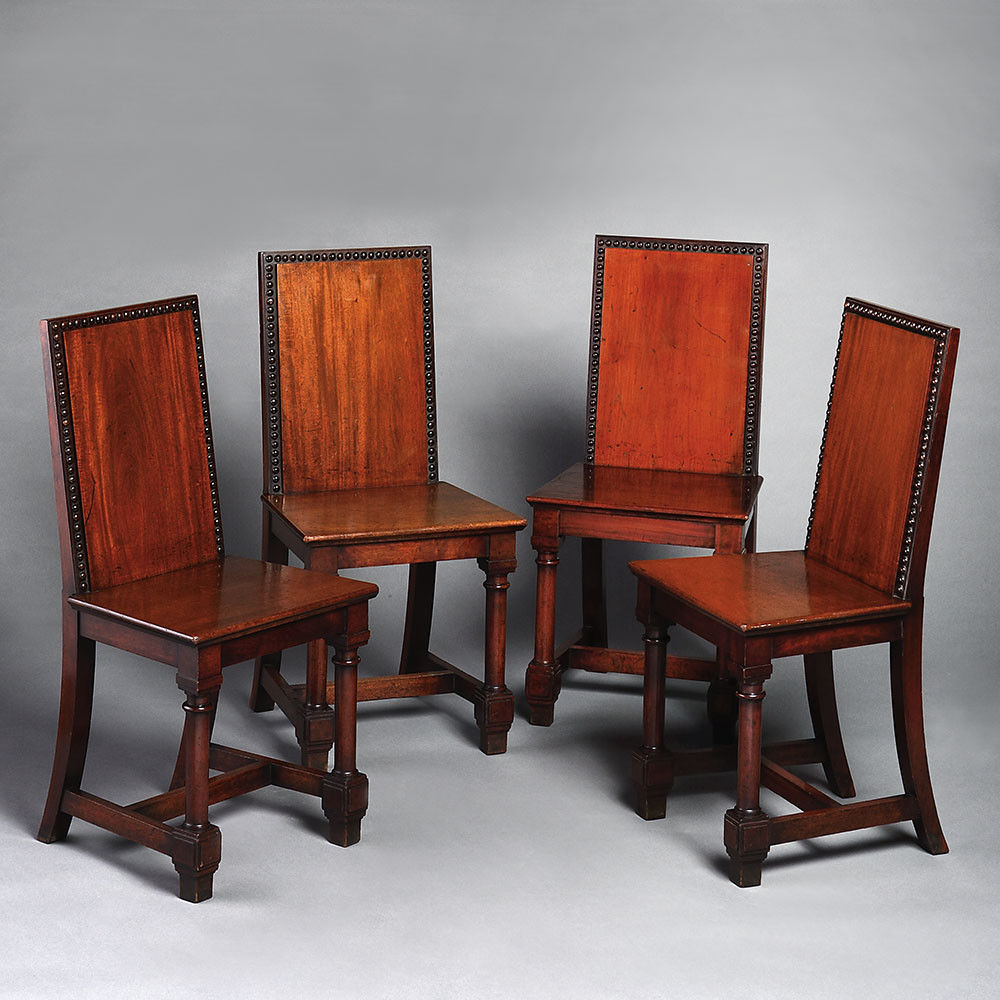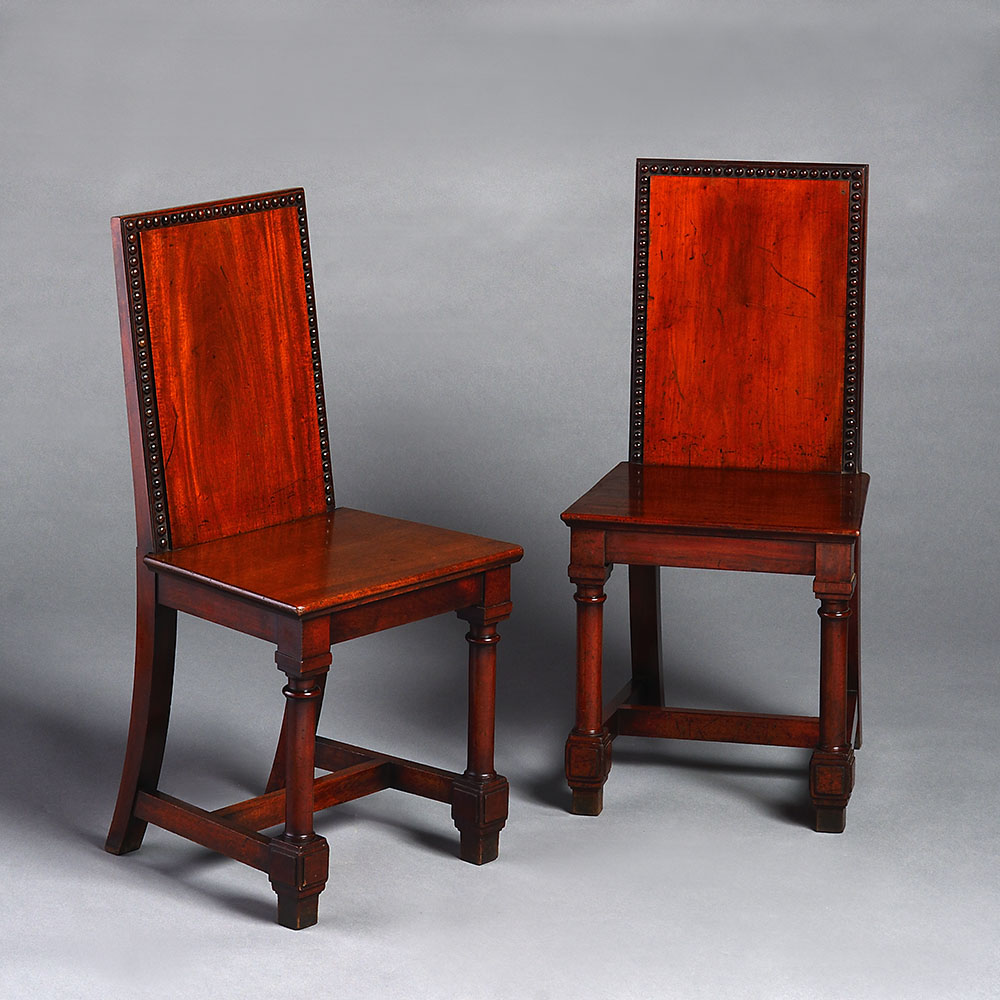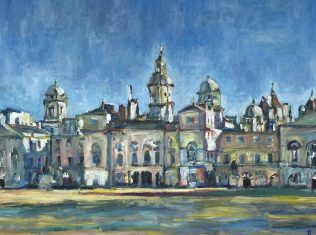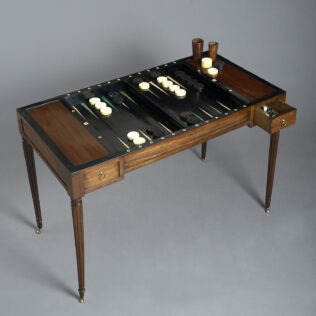During the 18th and 19th century, Hall Chairs became a staple in any grand English dwelling. Along with the Hall Stand, a table, stand or pedestal often containing provisions for umbrellas, sticks, hooks, pegs and a central mirror, the Hall Chair formed part of the first impression of a home.
A product of the Grand Tour, the idea of the Hall Chair stemmed from the Italian ‘Scabeli’, an essential part of the 16th century nobel palazzi of Italy. It soon, however, adopted particularly English elements, adding to the austere and intimidating hall, which served the sole purpose of demonstrating to visitors the wealth, taste, power and status of its inhabitants.

The objective of the Hall Chair was not to be comfortable, decorative or even practical, but merely to make a statement. The psychological message of power exuded by the chair was sometimes enhanced further by the introduction of an inlayed coat of arms adorning its steep back. Its unupholstered plank seat (sometimes hinged to reveal a shallow storage compartment) backed up right against the wall. While nobility might have used the chair to ease the strain of putting on ones boot, it was not intended for prolonged sitting and wet or soiled clothing would have spoiled any upholstery. More importantly though, peers would have been shown to a drawing room without delay, whereas inferiors would have been made to wait in the hall and were not to be made comfortable.

The example above, currently with Timothy Langston, is of a set of four rare mahogany Hall Chairs. They are English from circa 1850 and act as a wonderful example of their type. Beside their nailhead decoration, turned column legs and block feet they are largely unadorned. This, in turn, allows for the grain and colour of the mahogany to command the all the attention it deserves. Hall Chairs often lack stretchers, but the set pictures here has conjoined H-form stretchers adding further gravitas.
While the structure of society has become much more egalitarian in modern times, the Hall Chair remains a popular feature in the English home. Its intimidating symbolism might have lost its meaning, but its decorative value finds increasing appreciation.




